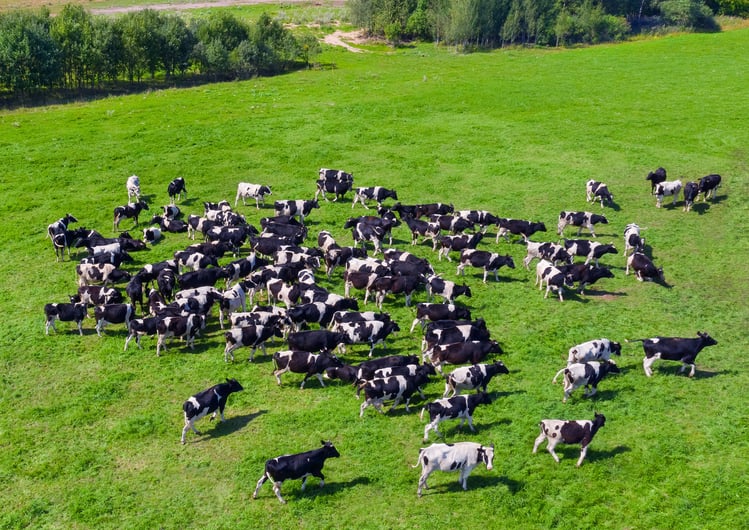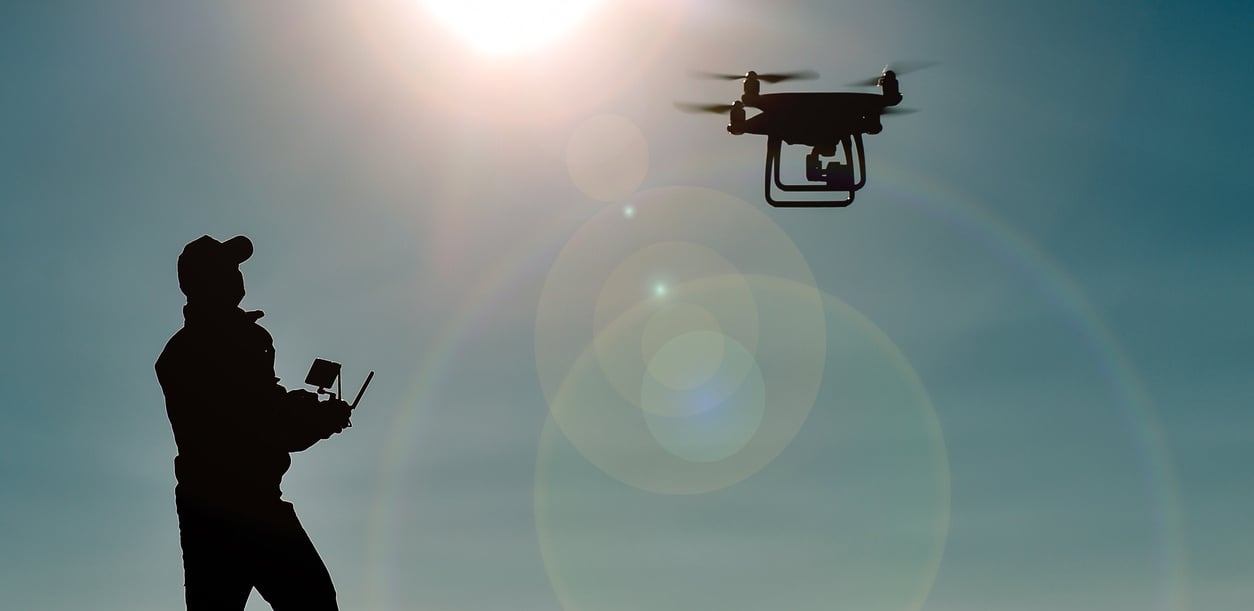Try picking up your phone and imagine that you can see your entire herd at once. You choose the viewing angle, click again, and track their invisible paths. Suddenly, you notice one cow starting to wander away. With another tap, you direct a drone to gently guide it back. All this without leaving your chair – this is smart farming in action. Is this the future of cattle management, or is it already becoming our reality?
Prefer to listen to this article? Click the play button below and enjoy our podcast!
Technology: Why is it inevitable in livestock farming?
It’s almost impossible to list all the reasons why technology is a world inevitability, from its importance in communication, transportation, security, economy and even the way people interact with food.
With their phone, more and more people order meals, scan for nutritional information, collect data from the food chain or search for the farm where their dinner came from.
At the same time, livestock farming is essential in our world. Responsible for feeding millions in the world, is an industry that not only is key for the success of many in their economy aspect, is also the substance in terms of nutrition of millions too. And a bigger demand asks for a bigger production.
Livestock farmers had been pioneers in using robotics in their daily lives, from milking robots, to automatic feeders, so this symbiose is just a sign that both technology and farming grow together and need each other.
Since new technologies were introduced in this industry we had access to better and more efficient reproduction methods and also an improvement in health and welfare, including feed too.

Drones: why a simple “buzz” can make a difference in cattle management.
So, if technology have in general so much potential, what are the specifics with drones? What can drones do to enhance your results? Improve your production and overall be a key to precision farming?
- Monitoring: Drones can monitor not only animal health and productivity, both as a herd and as individuals, but also their grazing land from afar.
- Versatility: A drone can independently aggregate multi-spectrum sensors, HD cameras, helping collecting data from other gadgets, and also crossing all that information into 3D models, allowing for volume and weight estimates.
- Rescuer: Can ignore difficult terrain, high temperatures, or even darkness, and allow the search for lost animals, identifying newborns and single out sick individuals.
- Protection: Drones can have many creative uses. There are already mentions of the usage of drones as “flying sheepdogs”. Not only by finding the animal, but also guiding it back to the herd and keeping them together. At the same time, reports on drones being used to protect herds from predators, not only providing proof of the attack but also preventing them, avoiding the escalation of this issue.
- Maintenance: Finally, drones can help with the maintenance of a farm, from collecting images for the land assessment, helping with prevention and safety, to scanning other technologies for problems. And even transporting small tools or medicine.

Conclusion – A helper from the skies
The potential usage of a drone in cattle management is almost endless, and with such a versatile tool in our hands, the opportunity to grow, improve our production and replying to the demands of the world are greater.
Those demands are not only from consumers, but also from the future of the industry. Allowing technology to help farmers, not only makes for a smarter decision for each professional health and safety, but also makes future generations of possible farmers more interested in an essential industry with a bright future.
Drones are much more than just a simple winged camera. They can be a key element of smart farming allowing monitoring herds from a distance, aggregate different gadgets, help rescue lost animals, protect against wild predators and maintaining information about land access.
References
[1.] Al-Thani, N., Albuainain, A., Alnaimi, F., & Zorba, N. (2020). Drones for Sheep Livestock Monitoring. 2020 IEEE 20th Mediterranean Electrotechnical Conference (MELECON), 672–676. https://doi.org/10.1109/MELECON48756.2020.9140588
[2.] Schelfhorst, E. (2022). Fact sheet - Drones for monitoring sheep welfare at lambing - Enhanced Producer Demonstration Site (PDS).
[3.] Kuru, K., Ansel, G., & Jones, D. (2024). Intelligent Airborne Monitoring of Livestock Using Autonomous Uninhabited Aerial Vehicles. 11th European Conference on Precision Livestock Farming, 52(10), 41–51. https://doi.org/10.1109/MC.2019.2906837
[4.] Heggie, J. (2019, March 18). The future of livestock farming. National Geographic.
[5.] Mohr, K. (2024, April 30). To Protect Livestock From Predators, Some Look to the Skies. Undark.
About the author
Marcelo Leitão (Researcher FeedInov CoLAB)
Researcher with Veterinary Medicine degree from Vasco da Gama University School in Coimbra, with published work in apiculture, conservation medicine, food safety and parasitology. Work experience in laboratory, wild animal rehabilitation center and small animal clinic. Currently working at FeedInov CoLAB, One Health department working scientific writing, education, and research projects.
Explore author’s articles



Leave your comments here